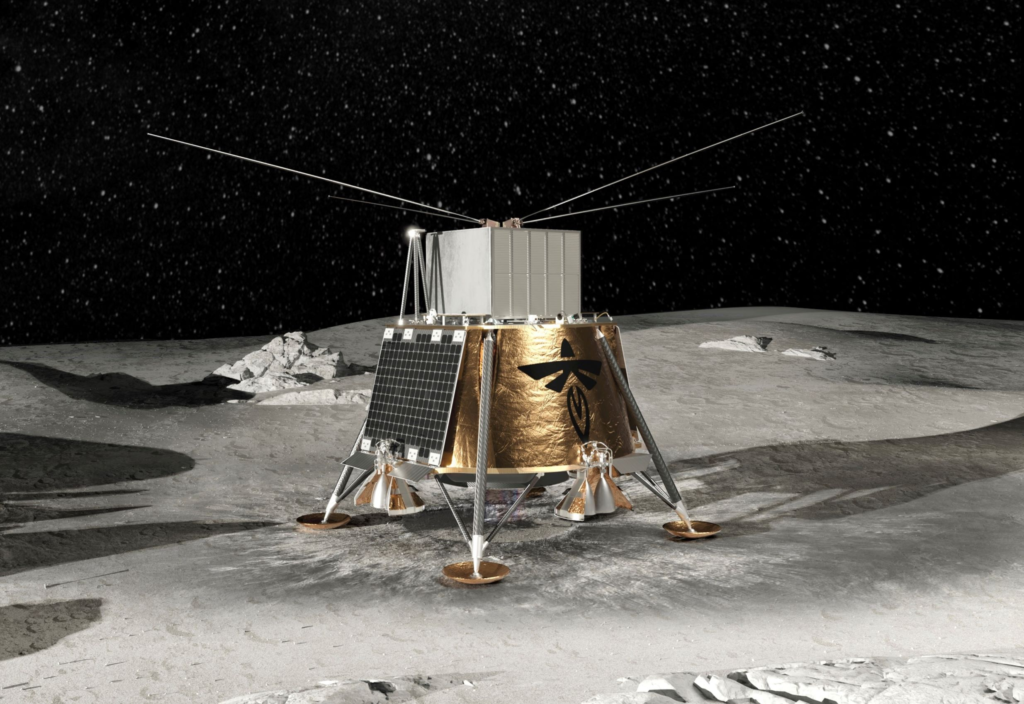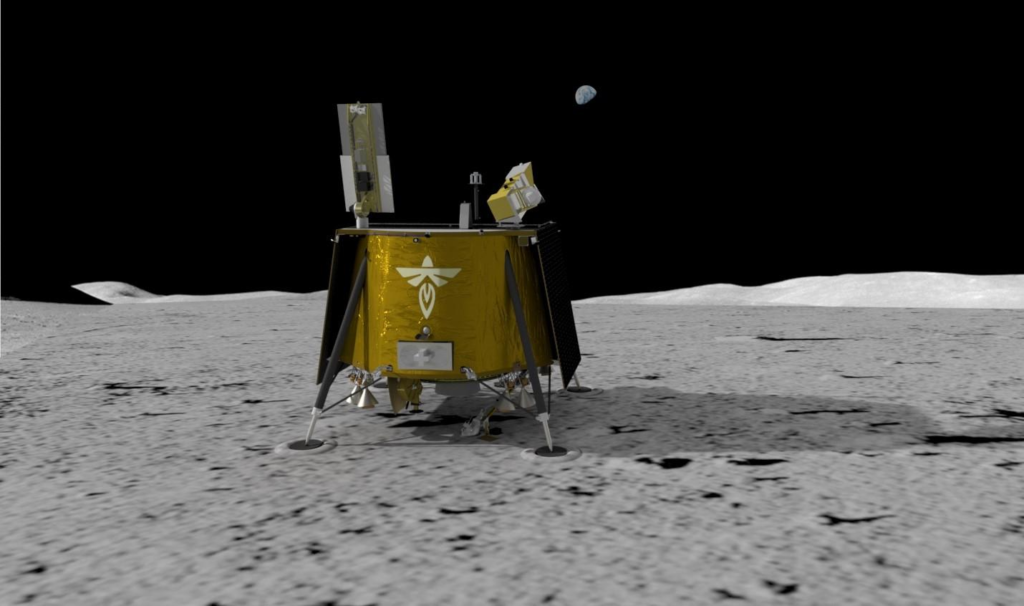
Firefly Aerospace Is One Step Closer To Landing On The Moon
For years now Firefly Aerospace has been working on more than just a small lift launch vehicle. In reality, the company also has an innovative Moon lunar lander named Blue Ghost. Years ago in 2021, NASA awarded the company a significant contract to land multiple payloads on the surface. Not only is this mission making progress, but the company just announced that they have received a second contract.
For one, just days ago Firefly received its fourth payload that will be integrated onto Blue Ghost and sent to the Moon. In total, this first mission will deliver a suite of ten NASA-sponsored science and technology demonstration payloads to Mare Crisium in the Moon’s Crisium basin. In even bigger news, they were awarded a new $112 million NASA contract to deliver multiple lunar payloads in 2026.
As Blue Ghost continues to be developed, additional opportunities and funding present a great opportunity for Firefly Aerospace and what it can offer. Here I will go more in-depth into the new contract from NASA, progress on the first and upcoming Moon mission, what to expect in the near future, and more.
New Moon Mission

Firefly Aerospace is not the most active when it comes to updates but when they do share some information it’s usually quite substantial. Only yesterday Firefly tweeted saying, “Firefly is GO for a mission to the Dark Side of the Moon! We’ve been awarded a 2nd NASA contract, delivering payloads to lunar orbit and on the far side of the Moon, building the infrastructure for ongoing lunar opportunities and planetary exploration.”
As Firefly’s second task order won under NASA’s Commercial Lunar Payload (CLPS) initiative, the company will use its Blue Ghost spacecraft in a two-stage configuration to first place a satellite into lunar orbit and then deliver two research payloads on the far side of the Moon. Some new illustrations of this design were also provided which highlight what they mean. The CEO of Firefly, Bill Weber, also commented “Our second lunar mission is something we’re celebrating as a Firefly team, as a NASA commercial provider, and most importantly, as an all-American company committed to making space exploration an achievable dream for everyone. This mission will debut Firefly’s unique two-stage Blue Ghost spacecraft, offering NASA and other customers multiple deployment options as we collectively build the infrastructure for ongoing lunar operations and planetary exploration.”
The NASA-provided payloads Firefly is delivering are meant to advance lunar research and infrastructure in conjunction with NASA’s Moon-to-Mars roadmap. Before landing on the Moon, the company’s Blue Ghost transfer vehicle will deploy the European Space Agency’s Lunar Pathfinder satellite into lunar orbit to provide communications for future spacecraft, robots, and human explorers. After touching down on the far side of the Moon, the Blue Ghost lunar lander will deliver and operate NASA’s S-Band User Terminal, ensuring uninterrupted communications for lunar exploration, and a research-focused payload that measures radio emissions to provide insight into the origins of the universe.
Along with the NASA payloads, Firefly’s mission is offering payload delivery and orbital services for additional government and commercial customers. This is thanks to a new development named the transfer vehicle. Firefly’s Blue Ghost transfer vehicle can deliver 2,700 kg of payload to lunar orbit and provide ongoing communications services for up to 5 years. The vehicle also has sufficient propellant reserve to enable a variety of advanced mission opportunities, such as lunar sample return to Earth and further exploration to nearby planets like Mars and Venus. The design of the company’s Blue Ghost transfer vehicle and its propellant reserve will enable a variety of mission opportunities, including lunar sample return to Earth, and long-duration orbital services, such as communications and surveying.
“Firefly’s ability to provide additional capabilities to multiple customers on the same mission lowers costs, further expands space exploration, and provides a win-win for everyone involved,” said Jana Spruce, Vice President of Spacecraft at Firefly Aerospace. “We welcome additional partners to join us on this historic mission as our society embarks on a new era of commercial development in cislunar space and beyond.” Overall, all of this new information highlights the work being done by Firefly to try and innovate and create multiple very capable lunar lander designs. With NASA’s big plans for the Moon only getting closer, the need for this technology is expected to increase as time goes on.
Upcoming Mission

Not only is this new mission making progress, but also the 1st and upcoming mission. Yesterday they confirmed that Firefly’s first mission, Blue Ghost Mission 1, is on track for launch in 2024 and will deliver 10 NASA-sponsored payloads and two commercial payloads to Mare Crisium, a low-lying basin on the Moon’s near side. Recently on March 9th, Firefly tweeted mentioning, “Our Blue Ghost Lunar lander is one step closer to its mission to the moon, as the team received and fit-checked the 4th payload!” This included an image of the team inside a cleanroom.
This mission was awarded just over two years ago in early 2021 and initially had a landing date in 2023. In this case, Blue Ghost will operate on-board payloads through lunar transit, during lunar orbit, and on the lunar surface for a complete lunar day (about 14 Earth days) and well into the freezing dark of lunar night. In addition to the NASA-sponsored payloads, the lander will carry more than 50 kg of commercial payloads. Mare Crisium, the landing site, has been the subject of previous lunar missions including the Soviet landers Luna 15, Luna 23, and Luna 24. In 2012, the NASA GRAIL mission confirmed and mapped a mass-concentration at the center of the basin. This lunar surface mission will explore this region’s regolith properties, geophysical characteristics, and the interaction between solar wind and Earth’s magnetic field.
In terms of progress, months after the initial award from NASA, Firefly awarded a contract to SpaceX to launch its Blue Ghost lunar lander for this first mission. At the time they said in a comment that “Firefly is excited to fly our Blue Ghost spacecraft on the highly reliable Falcon 9, which will deliver NASA instruments and technology demonstration payloads that support NASA science goals and NASA’s Artemis program. The high performance of SpaceX’s Falcon 9 launch vehicle permits a lunar transit using minimal Blue Ghost propulsion resources, thereby allowing the lander to deliver more than 150 kg of payload to the lunar surface.”
Next in October 2021, Firefly reached a major milestone with the successful completion of the Critical Design Review (CDR) of their Blue Ghost lunar lander. This CDR paved the way for the construction of the Blue Ghost lander. When this was announced they commented, “This milestone marks another step in an aggressive schedule and meeting it continues to showcase our spacecraft team’s ability to consistently deliver incredible work. This mission is a forerunner of what we see as a growing cadence of recurring data and payload service missions in cis-lunar space that will kickstart a lunar economy, and we’re honored to be demonstrating our ability to deliver these services for NASA and for our commercial customers.”
Moving on to April 2022, Firefly completed the Integration Readiness Review (IRR) of Blue Ghost M1. During the review, held at the company’s headquarters in Cedar Park, TX, the team marked key progress milestones across multiple areas, including: Structures, Fluids, Propulsion, Core Avionics, Battery Production, Harness Production, FlatSat progress, MGSE, EGSE, and Facilities readiness to support lander integration. “Passing IRR indicates we have the necessary team, hardware, equipment, and documentation to support lander integration,” said Ray Allensworth, Blue Ghost Program Manager, who led the review process, “This team continues to overcome obstacles and perform at the highest levels, helping us pave our path to landing on the Moon in 2024,” she continued. The completion of IRR came less than six months after completing the Critical Design Review (CDR). “The short turnaround between our CDR in October and IRR is a testament to the soundness of the baseline lander design, forward planning by program, and the creativity of our engineers in overcoming supply chain and other challenges as they arise,” said Will Coogan, Blue Ghost Chief Engineer.
At this point, they said that their next milestone will be the Lander Test Readiness Review which verifies readiness for primary system functional testing. In the coming months, they will be showcasing the payloads and the people making all of this come together. Focusing more on the destination, Firefly’s landing site, Mare Crisium, is a large, dark basaltic plain on the Moon’s near side that was created by early volcanic eruptions and flooded with basaltic lava. Basalts in Mare Crisium range in age from 2.5 to 3.3 billion years old. This unique landing site will allow their payload partners to gather critical data about the Moon’s regolith, geophysical characteristics, and the interaction of solar wind and Earth’s magnetic field. These investigations will help prepare for human missions to the lunar surface. Something we can look forward to seeing not too long from now.
Conclusion
Firefly Aerospace is not only making progress on the upcoming Moon mission but was also just awarded a second larger contract. The first is receiving its payloads and is set to launch in early 2024. The second features a new design and the ability to launch payloads into lunar orbit as well. We will have to wait and see how it progresses and the impact it has on the space industry.
